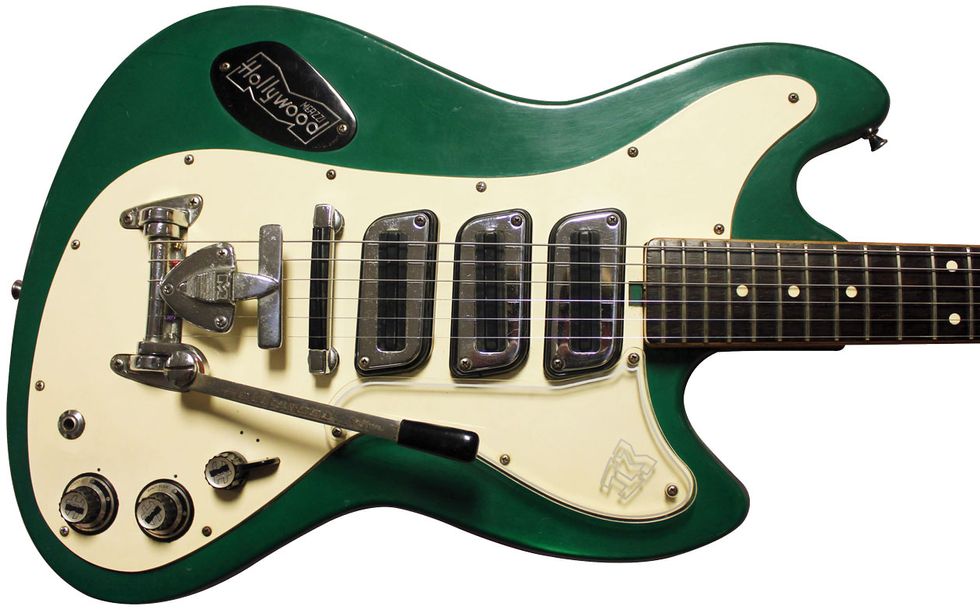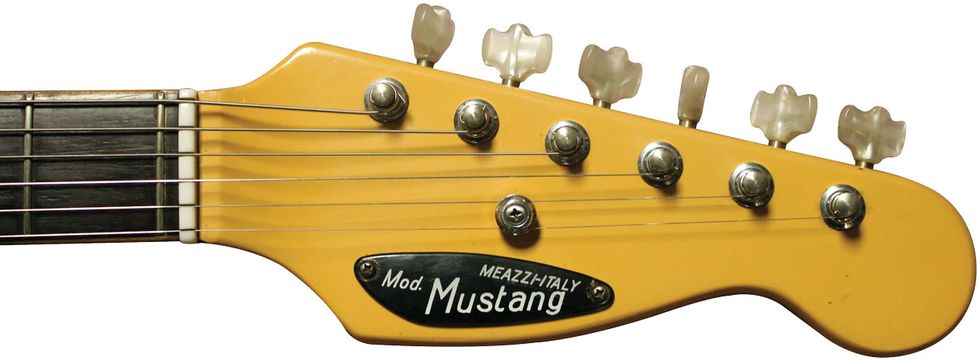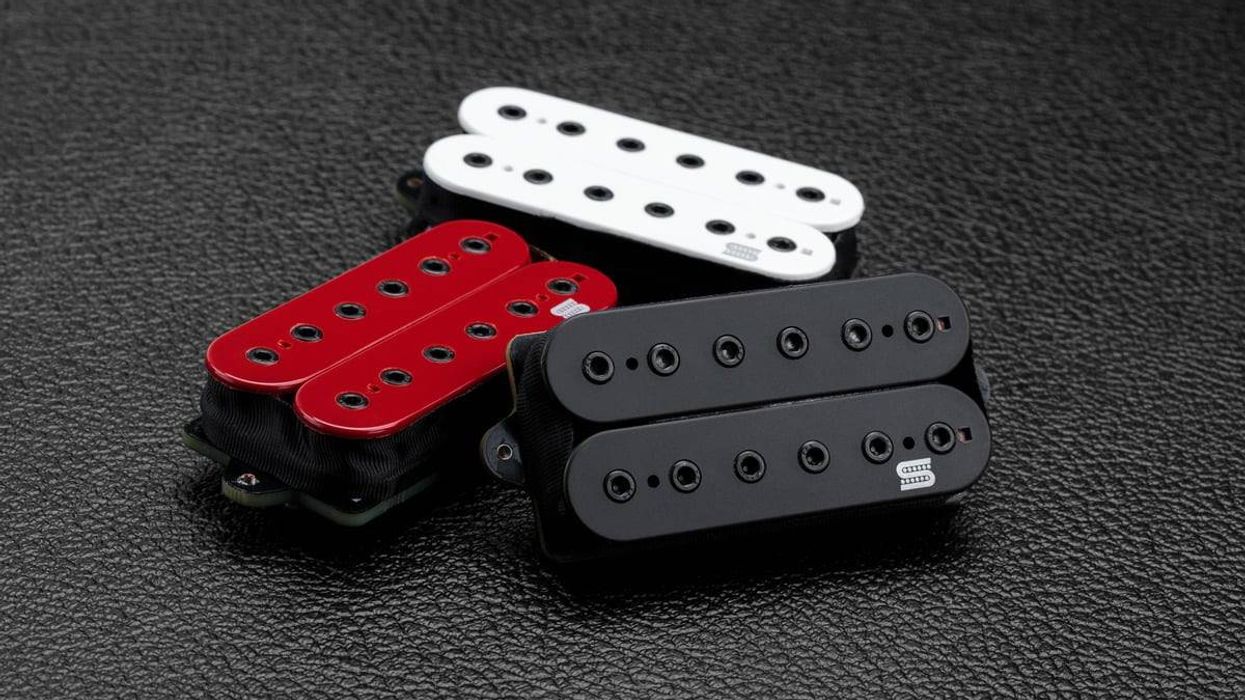I woke around 5 a.m. a few nights ago when my wife’s phone started buzzing with a FaceTime alert. My in-laws are visiting Italy, and not fully realizing the time difference, kindly decided to say hello in the wee hours of the morning. They’re checking out a few different areas in Italy, and as I listened to the daily vacation recap on speakerphone, I thought about visiting Italy myself someday to search out vintage guitars. Old Italian guitars are among my favorites, and I count the Galanti Grand Prix among my all-time favorite guitars, but this month, I want to talk about a lesser-known example from the 1960s.
This Meazzi Mustang (Photo 1) hailed from the “Hollywood” electric guitar line that spanned from around 1966 to 1969. I have perused a Meazzi catalog from 1967, and the guitars from the era were really something. Touches like geometric pickup covers, beautiful body lines, flashy logos, totally intriguing controls, and clear, tiered pickguards really give one the feeling of a fine Italian sports car ... or maybe one of those ultra-cool old Lambretta scooters that are still weaving through the streets of Capri (where my in-laws were broadcasting from). There’s no question that artistic Italian design has always had a stylish flair, and these guitars were certainly no exception.
Even the names of the guitars in the line included such doozies as the Lovely, Corsair, Jupiter, Zodiac, and Zephir. The hollowbody guitars were coined Spitfire, Old Jazz, and Supersonic, while some of the basses included the Meteor, Tiger, and Kadett. This was a fully complete guitar line for the era, and the features of the Meazzi guitars were a bit dizzying.
Photo 2
Many of the instruments featured over-engineered components such as a proprietary tremolo system (Photo 2), a super-groovy string damper, and an adjustable bridge, as well as quite fine-sounding pickups. Some of the guitars even had an onboard transistorized preamp, which can be pretty awesome when layered over a fuzz pedal.
The Meazzi name is the surname of the founders, and to me, the company seemed very similar to Japan’s Arai, because they both dabbled in all sorts of products and imports—not just guitars. The Hollywood guitars have all the hallmarks and quality of the builders from the famous Catelfidardo region—the birthplace of the accordion and the Polverini factory there. The Meazzi electric-guitar line ceased production in 1969, but Meazzi continued to deal in instrument distribution and amplification for several more years.
Photo 3
This Mustang—and all the Meazzi guitars—are very difficult to find here in the U.S. It’s a shame because they really are fine instruments with a unique feel and voice. The body of this particular Mustang sports a thin, green lacquer finish that contrasts with a slender-profile neck with a thicker, almost plasticized finish. It’s a strange contrast to be sure, but then again, this is a guitar filled with little details that most of today’s guitar makers would never consider.
See and hear this delectable, Italian-recipe Meazzi Mustang demoed by Mike Dugan.
Things like the string mute that almost resembles a piece of jewelry and the shapely pickguard really give this guitar a bit of sexy. The scale is typical Fender length at 25.5", and the pickups give this guitar a bright, but not overly aggressive tone when compared to the other Italian mini-humbuckers of the era, which can really bust speakers. When layered with deep reverb, this guitar is a total surf-rock machine. And like a Lambretta scooter, the controls are simple enough that it could be an everyday player—with a little work, of course. Viva l’Italia!



















